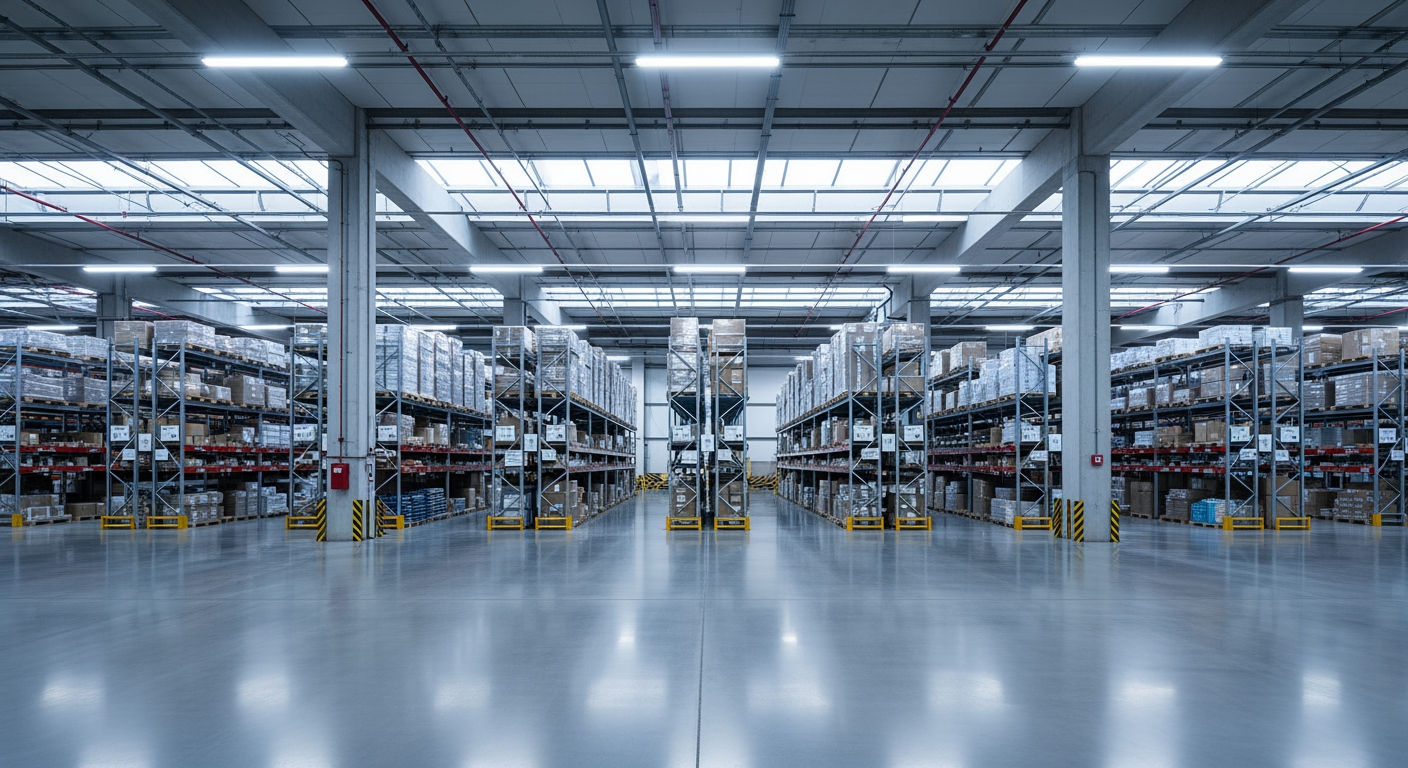Power over Ethernet (PoE) camera systems are reshaping how businesses and schools approach video monitoring. By combining power and data transmission through a single cable, these systems eliminate complex wiring while delivering enterprise-grade security capabilities. Whether you're securing a warehouse floor, monitoring school hallways, or protecting retail operations, understanding the latest monitoring technology and compliance requirements is crucial for making informed investment decisions in 2025.
Understanding PoE Camera Systems: The foundation of today's business security
What Makes PoE Technology Different
Power over Ethernet technology represents a fundamental change in how monitoring systems operate. Unlike traditional security cameras that require separate power and data connections, PoE cameras receive both through a single Ethernet cable. This streamlined approach simplifies installation, reduces infrastructure costs, and ensures stable, interference-free connections critical for 24/7 commercial operations.
The reliability advantage stems from Ethernet's inherent stability compared to wireless signals. In busy warehouse environments or multi-story office buildings, this means your monitoring system maintains consistent performance without the dropouts or interference common with wireless alternatives. Enterprise deployments also benefit from built-in encryption capabilities, providing an additional security layer that protects against unauthorized access to video feeds.
Core Benefits for Business Applications
Current PoE systems offer centralized power management that streamlines how IT teams maintain video infrastructure. Remote monitoring, management, and reset functionality mean technicians can troubleshoot cameras without climbing ladders or visiting remote locations. This capability alone can significantly reduce operational costs compared to traditional analog systems.
The scalability factor makes PoE particularly attractive for growing businesses. Adding cameras to expand coverage requires only running additional Ethernet cables to a central switch, not complex electrical work. This flexibility enables phased deployments where organizations start with essential coverage and expand as budgets allow.
Commercial Video System Architecture
Essential Components for Enterprise Security
Today's commercial security systems integrate multiple technologies working in concert. The core architecture includes:
Component |
Function |
Business Application |
|---|---|---|
Video Monitoring |
Visual monitoring and recording |
Monitor loading docks, sales floors, parking areas |
Access Control |
Manage entry to buildings and rooms |
Restrict warehouse zones, secure server rooms |
Intrusion Detection |
Alert for unauthorized entry |
Protect after-hours operations, sensitive areas |
Cloud Management |
Centralized remote control |
Manage multiple locations from single dashboard |
This integration allows for advanced response protocols. When a door sensor detects unauthorized warehouse access, nearby cameras automatically begin recording while the access control system locks down other entry points—all without human intervention.
Advanced Features Driving Business Value
Professional-grade cameras now offer specifications that exceed basic security needs. High-resolution models provide 16MP dual-sensor capabilities with 180° ultra-wide fields of view, ideal for monitoring expansive warehouse floors or retail spaces. Advanced sensors with f/1.0 apertures deliver full-color images in near-darkness, reducing blind spots in loading docks or storage areas where traditional cameras struggle.
AI-powered analytics convert raw footage into operational data. Systems can detect inefficient workflows, verify standard operating procedure (SOP) adherence, flag missing personal protective equipment, and monitor restricted area violations. These capabilities shift security from reactive monitoring to anticipatory risk reduction.
Comparing Top Commercial Video Monitoring Solutions
Enterprise Platform Comparison
Platform |
Deployment Speed |
Hardware Flexibility |
Scalability |
Key Differentiator |
|---|---|---|---|---|
Spot AI |
Under 1 week |
Camera-agnostic, works with existing |
Unlimited locations |
Cloud-native with swift deployment |
Traditional NVR |
2-4 weeks |
Limited compatibility |
Site-by-site expansion |
On-premise storage |
Legacy Analog |
3-6 weeks |
Proprietary only |
Complex scaling |
Requires full replacement |
Hybrid Systems |
2-3 weeks |
Mixed compatibility |
Moderate |
Bridges old and new tech |
Measuring Financial Impact
The financial impact of current monitoring extends beyond security. AI-powered commercial systems deliver substantial returns through multiple value streams:
-
Theft Deterrence: Visible monitoring reduces shrinkage
-
Operational Efficiency: Analyze workflows to identify bottlenecks and improve processes
-
Insurance Savings: Premium reductions with verified systems
-
Compliance Protection: Help reduce the risk of OSHA fines
School Video Systems: Compliance and Retention Requirements
Understanding Educational Compliance Standards
Educational institutions face stringent mandates that vary by jurisdiction. The Central Board of Secondary Education requires high-resolution cameras with audiovisual recording capabilities in all affiliated schools. Coverage must include entry points, corridors, classrooms, libraries, and common areas—with privacy zones like restrooms explicitly excluded.
Balancing Security with Privacy
FERPA compliance adds complexity because video footage containing identifiable student information becomes part of educational records. This classification requires schools to implement the same privacy safeguards used for academic records, including controlled access, secure storage, and appropriate retention schedules.
Schools must establish clear policies addressing:
-
Who can access footage and under what circumstances
-
How long different types of recordings are retained
-
Procedures for handling law enforcement requests
-
Parent and student rights regarding recorded footage
Industry-Specific Compliance Considerations
Healthcare Facilities and HIPAA
Healthcare video monitoring presents specific needs under HIPAA regulations. Any footage showing patient faces or identifying information becomes protected health information, requiring stringent safeguards. Cameras should not be positioned to record computer screens displaying patient data or be placed in consultation rooms, with exceptions only for medication storage areas inaccessible to non-staff.
Key healthcare compliance requirements:
-
Audio recording prohibited unless operationally essential
-
Monitoring notices posted in all monitored areas
-
Access limited to designated, trained personnel
-
Regular review of monitoring necessity
-
Documented retention and deletion schedules
International Privacy Regulations
Organizations with global operations must navigate GDPR requirements for any footage containing EU citizen data. This means implementing data protection impact assessments, justifying camera placement, and ensuring proportional monitoring coverage. Transparency stipulations mandate clear signage at camera locations stating recording purposes and data controller contact information.
Manufacturing and Warehouse Compliance
ISO 27002:2022 establishes specific requirements for facilities handling critical assets. Organizations must implement continuous monitoring of restricted areas, install detectors triggering alarms for unauthorized access, and configure comprehensive coverage including external doors, windows, and computer rooms. The standard emphasizes reducing vulnerabilities that could be exploited, such as unsecured smoking areas or secondary entrances.
Selecting the Right Video System for Your Organization
Key Evaluation Criteria
When comparing commercial video solutions, prioritize these factors:
-
Camera Compatibility: Systems working with existing cameras eliminate costly replacements
-
Deployment Speed: Cloud-native platforms deploy in days versus weeks for traditional systems
-
Scalability: Ensure the platform grows with your business without architectural limitations
-
Integration Capabilities: Look for open APIs enabling connection with existing security infrastructure
-
Total Cost of Ownership: Factor in ongoing maintenance, storage, and upgrade costs
Technology Considerations
Capable video platforms should offer:
-
AI-powered search capabilities to find incidents in minutes
-
Mobile access for security teams and management
-
Automated retention policy enforcement
-
Role-based access controls with detailed audit trails
-
Cloud backup guarding against footage loss from equipment failure
Future-Proofing Your Investment
Platforms that seemed advanced five years ago now struggle with current standards. When evaluating systems, consider vendors demonstrating:
-
Regular feature updates and innovation
-
Strong financial backing indicating long-term viability
-
Commitment to open standards to avoid vendor lock-in
-
Track record of successful enterprise deployments
-
Responsive customer support and training resources
From Passive Recording to Anticipatory Risk Management
Video monitoring has evolved from passive recording to active risk mitigation. AI-powered platforms turn cameras into intelligent sensors that detect safety violations, help reduce incidents, and drive operational improvements. The right system protects assets while also improving facility management, compliance, and operations.
See Spot AI’s video AI platform in action. Request a personalized demo to explore how you can streamline security, safety, and operations with intelligent video monitoring.
Frequently Asked Questions
What are the advantages of using PoE cameras in a business?
PoE cameras offer several key advantages for business applications. They simplify installation by requiring only a single cable for both power and data, reducing infrastructure costs. The centralized power management allows IT teams to remotely monitor and reset cameras without site visits. PoE systems also offer superior reliability through stable Ethernet connections that resist interference, delivering consistent 24/7 monitoring coverage essential for commercial operations.
How do commercial video monitoring systems differ from residential systems?
Commercial systems are engineered for continuous operation with enterprise-grade components built to withstand demanding environments. They feature higher resolution cameras (often 16MP or higher), advanced AI analytics for detecting safety violations or operational issues, and scalable architectures supporting hundreds of cameras across multiple locations. Commercial platforms also include advanced access controls, compliance features for industry regulations, and integration capabilities with existing business systems—requirements rarely found in residential solutions.
What factors should businesses consider when choosing a security camera system?
Key factors include camera compatibility with existing infrastructure to avoid costly replacements, deployment speed to minimize operational disruption, and scalability to accommodate future growth. Businesses should evaluate total cost of ownership including ongoing storage and maintenance, verify that compliance capabilities match industry requirements, and verify integration options with current security systems. The platform's AI capabilities for automated incident detection and investigation efficiency also significantly impact operational value.
How long should security footage be retained for compliance?
Retention mandates vary significantly by industry and jurisdiction. Schools typically must retain footage for 15-30 days minimum, though some states like Texas require six months. Healthcare facilities under HIPAA must establish documented retention schedules, while businesses under GDPR need clear policies for EU citizen data. Manufacturing facilities following ISO standards require retention periods supporting incident investigation. Organizations should consult legal counsel to establish retention policies meeting all applicable regulations.
What is the best video AI for workplace safety?
The best video AI for workplace safety moves beyond simple recording to identify risks before incidents occur. These systems use AI to send real-time alerts for specific hazards, such as a person entering a restricted area or missing personal protective equipment (PPE). This capability turns raw video into actionable data, enabling safety managers to provide targeted coaching and build a data-driven culture of forward-looking risk reduction.
About the Author
Tomas Rencoret leads the Growth Marketing team at Spot AI, where he helps safety and operations teams use video AI to cut safety and security incidents as well as boost productivity.

























.png)
.png)
.png)